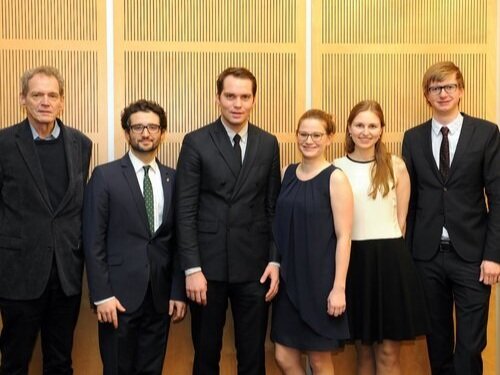Hashomer Hatzair in Berlin: Searching for History
Members of the Jewish youth group traveled to Israel to research what happened in the 1930s. Widen the Circle’s Lilli Stötzler went with them.










by Lilli Stötzler
Ninety-one years ago, in 1931, the Jewish youth organization Hashomer Hatzair established a chapter in Berlin. It lasted just eight years, disappearing in 1939. It took another 73 years for the organization to reestablish itself in Berlin, and now the new members are wondering about their history: What happened in the 1930s, and what happened to the members when the chapter essentially dissolved? I have been lucky to accompany them on one leg of this journey of discovery.
What is Hashomer Hatzair?
Hashomer Hatzair is a progressive, secular Jewish youth movement that offers scouting and educational programs for children and teens. The activities are organized by the local chapter, known as a ken (“ken” means “nest” in Hebrew) and are led by young members—youth leading youth. It was founded in 1913 in eastern Europe, in an area that was then part of the Austro-Hungarian Empire. Today Hashomer Hatzair more than 10,000 members in Israel and is active in 27 countries.
Between 1931 and 1938, the organization had kenim in many cities in Germany. Now, 10 years after the official 2012 reopening, the Berlin ken has launched a research project to explore the traces and memories of earlier generations in the city. A delegation of Hashomer Hatzair staff, members, and guests spent eight days in Israel to conduct research, meet with descendants, and spread the word about the project.
The research trip in Israel: Kibbutzim and Jerusalem
Many of the members of Hashomer Hatzair in the 1930s escaped national socialism by emigrating to Palestine. As part of the socialist movement, many of these young people built their new life at a kibbutz. And so the history project kicked off with a journey to Israel to visit several kibbutzim. The goal: find traces of the people and the activities of Hashomer Hatzair in Germany.
The group consisted of active members and staff of Hashomer Hatzair in Berlin, volunteers with a deep interest for this topic and research skills, and guests from allied organizations, such as the Falcons, the Amadeu Antonio Foundation, and Widen the Circle. Learning about the kibbutz movement, visiting local and national archives, and meeting with descendants were at the core of this experience. We visited several kibbutzim north of Tel-Aviv; went to Yad Vashem–the World Holocaust Remembrance Center; and the Herzl Archive in Jerusalem, and even held an event to present our project to interested parties at the famous YMCA Three Arches Hotel in Jerusalem.
One of the highlights for me was to see and hear how the kibbutzim have developed over time. And how the founders had to move every single stone in order to make the soil fertile and build their communal space for living.
The history work
In 2012 Hashomer Hatzair was re-established in Berlin. But what does “re-” mean, if you know so little about the life this movement had more than 80 years ago? Connecting the members of today with the experiences the members had in the 1930s, knowing what this movement meant to them and how they experienced the activities and traditions—that was the main goal for Nitzan Menagem, chairperson of the Berlin ken, and the idea that prompted her to initiate this project.
Before the delegation left for Israel, very little information was known: a few member names, the address of the headquarters, the time the movement was active. All the different kibbutzim have their own archives with pieces of information that will hopefully help create a better understanding of the movement.
Now, after the group has spent hours in archives—looking at letters from Israel to Germany, scanning photographs, finding new names on meeting protocols and emigration lists—the real history work can begin.
What I take away from this research is that doing history work is a little bit like a mixture of a scavenger hunt and a jigsaw puzzle. It is not only about what you find and how to put it together; it is also very much about discovering where to look.
The story of Hashomer Hatzair’s work to preserve the history of the Berlin ken is far from finished. Now, back in Berlin, the members will begin putting the pieces together from the wealth of information collected in Israel. Likely, they will find that more information is needed. This is just the beginning, but it is a beginning.
THIS WALL BRINGS PEOPLE TOGETHER
Students at this Berlin elementary school, built on the site of a synagogue, have been building a wall for the past two decades. It delivers a powerful message about community.
A NAZI LEGACY, A LIFE GIVING BACK
Hilde Schramm has spent her adult life fighting racism and intolerance. And she doesn’t shy from her family history as the daughter of an infamous Nazi leader.
STUDENTS REACHING STUDENTS
When a handful of ninth graders from Berlin met Rolf Joseph in 2003, they were inspired by his harrowing tales of surviving the Holocaust. So inspired that they wrote a popular book about his life. Today the Joseph Group helps students educate each other on Jewish history.



